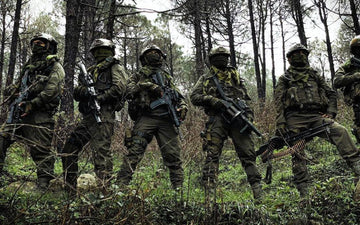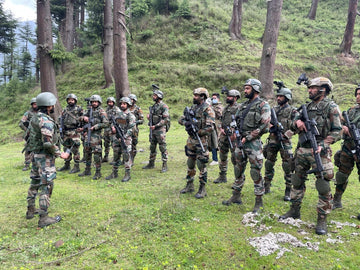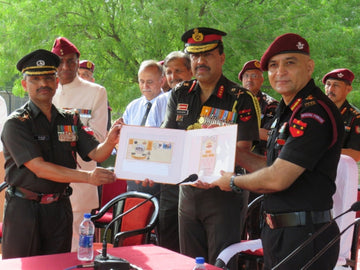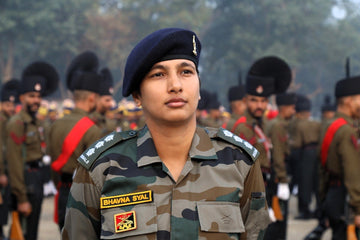Becoming a commando in the Marine Commandos (MARCOS), the elite special forces unit of the Indian Navy, represents one of the most prestigious accomplishments for those aspiring to serve in India's armed forces. Known for their unmatched operational capability and relentless determination, MARCOS Commandos are deployed in some of the most challenging environments, undertaking high-risk missions that often remain classified. However, the journey to becoming a MARCOS Commando is not only rigorous but also highly selective, demanding individuals who possess exceptional physical fitness, mental resilience, and unwavering commitment to service.
This comprehensive guide outlines the eligibility criteria and selection process involved in becoming a MARCOS Commando, providing insight into the challenges, training, and ultimate rewards that come with serving in this elite unit.
Historical Context
The MARCOS unit's origin dates back to 1987, during a growing need for specialized naval forces capable of conducting military operations in maritime environments. This need arose in response to various regional threats and the increasing complexity of conflicts. Over the years, MARCOS has evolved into a formidable force, participating in anti-terrorism, hostage rescue, and counter-insurgency operations. They were notably involved in the 2008 Mumbai attacks, where their swift action was crucial in neutralizing threats and saving innocent lives.
The commitment to continuous improvement has positioned MARCOS as a key player in modern warfare, adapting to new methods and technologies. As such, becoming a member of this force requires not only meeting stringent entry requirements but also demonstrating the ability to thrive in dynamic and often life-threatening situations.
Eligibility Criteria
To embark on the challenging journey of becoming a MARCOS Commando, candidates must first meet specific eligibility criteria:
- Citizenship: Candidates must be Indian citizens. This requirement establishes a foundation of trust and commitment to the sovereignty of the nation.
- Age: Typically, candidates should fall between the ages of 18 and 30. This age range ensures a blend of youthful agility and enough life experience to handle the rigorous demands of the training and operational duties ahead.
- Service Background: Candidates must be serving members of the Indian Navy. While recruitment may begin in their early 20s during their initial service, prior naval experience is pivotal for a successful transition into special forces.
Selection Process
The selection process for MARCOS is notoriously challenging, designed to filter out those who lack the physical and mental fortitude required for elite operations. The process consists of several stages:
Stage 1: Preliminary Screening
The journey begins with a detailed scrutiny of the candidate’s application, including education and physical fitness standards. Candidates must pass:
- Endurance Tests: Long-distance runs (5-10 km with gear) and open-water swimming (minimum of 1.5 km).
- Agility Tests: Obstacle courses designed to assess physical agility and overall fitness.
Successful candidates proceed to the next stage, where health and psychological evaluations are conducted.
Stage 2: Physical Fitness Test (PFT) and Psychological Evaluation
During this phase, candidates undergo a series of demanding fitness drills and endurance tests that assess:
- Strength: Physical tests targeted at upper and lower body stamina.
- Mental Resilience: Psychological evaluations to gauge mental durability and decision-making under stress.
Candidates must display both physical capability and a strong psychological profile to continue in the selection process.
Stage 3: Hell Week and Advanced Screening
Often regarded as one of the more infamous stages, "Hell Week" is characterized by its brutal intensity. Candidates face:
- Sleep Deprivation: Less than four hours of sleep over five days.
- Relentless Physical Drills: Extreme conditions that test physical limits.
- Psychological Testing: Further assessments designed to push mental boundaries.
Statistics indicate that over 80% of candidates do not survive this stage, marking it as an essential filter for the most resilient individuals.
Training Program
Upon successful completion of the selection process, candidates enter the training program, which persists for approximately 2-3 years.
Phase 1: Initial Selection and Basic Conditioning
This first phase introduces candidates to essential skills:
- Weapons Handling: Training in the use of various military-grade firearms.
- Close-Quarters Combat (CQC): Techniques in hand-to-hand combat tailored for urban warfare.
- Hostage Rescue Operations: Strategies and methodologies for high-stress rescue scenarios.
Candidates must successfully complete this foundational training to advance further.
Phase 2: Specialized Training
The second phase refines the skills learned during initial training, featuring:
- Basic Special Forces Training at INS Abhimanyu: A 10-week focused program.
- Basic Parachute Course: A three-week course to enhance aerial assault capabilities.
- Combat Divers’ Course: Training in underwater operations, vital for maritime missions.
These specialized courses prepare candidates for the unique challenges they will face, cementing their status as elite operators.
Phase 3: Advanced Training and Probation
Advanced training introduces candidates to high-stakes scenarios, including:
- Combat Free-Fall Training: HALO/HAHO parachuting techniques that allow for covert insertions.
- Clandestine Operations: Training in stealth missions, anti-piracy efforts, and surveillance activities.
- Fieldcraft Techniques: Emphasis on tactical movement in diverse terrains like deserts and mountainous regions.
- Explosive Ordnance Disposal: Skills to manage and neutralize explosive threats.
This phase ensures candidates are not only combat-ready but also skilled in a multitude of operational scenarios.
Phase 4: Operational Deployment
The final phase consists of real-world simulations, designed to integrate all learned skills under the pressure of operational conditions. This practical application ensures candidates are fully prepared for deployment, whether for peacekeeping or more active combat scenarios.
Training Duration and Dropout Rate
Cumulatively, the entire training program lasts between 2 to 3 years, marked by an astonishing dropout rate often exceeding 80%. This attrition rate underscores the demanding nature of the program and affirms that only those with the highest levels of dedication and capability progress to the ranks of MARCOS Commandos.
Additional Training and Collaborations
Throughout their careers, MARCOS personnel benefit from collaborative training with various special forces units, including the Indian Army's Para SF. Such partnerships are cultivated at specialized institutions to cover:
- Unconventional Warfare: Training that emphasizes strategies against irregular military forces.
- High Altitude Mountain Warfare: Skills essential for operations in mountainous terrains.
- Desert Warfare: Techniques adapted for operations in arid environments.
- Counter-Insurgency: Tactical approaches to handle the complexities of insurgency situations.
Case Studies or Real-world Applications
One notable operation that exemplifies MARCOS’ capabilities occurred during the 26/11 Mumbai attacks. A team was deployed to counter terrorist threats and rescue hostages in a highly volatile situation. Their decisive action led to the neutralization of threats within hours, showcasing not only their training but also their ability to operate under extreme pressure.
Statistical Data and Research Insights
The elite nature of the MARCOS is backed by metrics illustrating their operational success. For instance:
- Response Time: MARCOS units can typically respond to crises within minutes, significantly reducing potential casualties.
- Mission Success Rate: Success rates in operations often exceed 90%, attributed to rigorous training and ongoing skill development.
These figures highlight the esteemed position MARCOS Commandos hold within military circles globally.
Challenges and Solutions
Despite the extensive training and preparation, several challenges persist in the pathway to becoming a MARCOS Commando:
- Physical and Mental Stress: The dual demands of physical endurance and mental resilience can be overwhelming. Continued training in stress management alongside physical training could better prepare candidates.
- Retention of Talents: Given the intense nature of training, retaining highly skilled personnel remains a challenge. Enhancing incentives, including career development opportunities and mental health support, can mitigate this issue.
- Adaptation to Emerging Threats: As hybrid threats evolve globally, continuous curriculum adaptation in training is essential. Incorporating technology-focused training, such as cybersecurity measures and drone operations, can ensure relevancy.
Future Trends and Predictions
As global military dynamics shift, it is evident that MARCOS will require adaptation in training to meet new challenges. The integration of technology into combat training is one trend poised to revolutionize warfare. Operations may increasingly involve cyber warfare or unmanned aerial assault strategies, requiring a re-emphasis on technological proficiency alongside traditional skills.
Additionally, international collaboration with global special forces units will continue to enhance operational tactics and strategies, strengthening the MARCOS force on the global stage.
Conclusion
Becoming a MARCOS Commando is not just about physical prowess; it is a holistic journey requiring unwavering commitment, mental resilience, and tactical expertise. The rigorous selection and training process is designed to identify and cultivate individuals who can perform at the highest levels in the most demanding situations. For those who aspire to serve in this elite unit, the path is fraught with challenges - yet the rewards of pride, honor, and the ability to make a significant difference in national security make it a worthy pursuit.
For aspiring candidates, a proactive approach to preparation, both physically and mentally, as well as seeking resources that enhance their understanding of maritime operations, will greatly aid in navigating this demanding journey. Engaging with study materials, training programs, and mentorship can equip candidates with the insight necessary to excel and ultimately achieve their goal of serving in the distinguished ranks of MARCOS Commandos.





